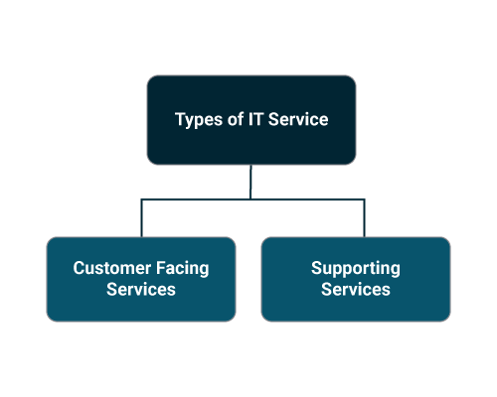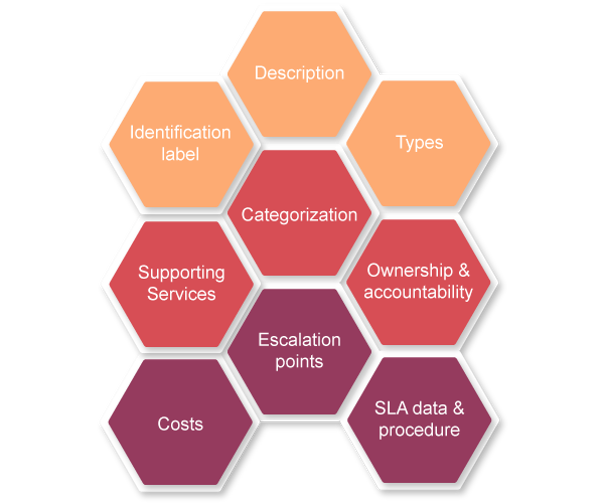
Service Catalogue Management is a way of keeping the operational service information consolidated in a catalogue. It helps in providing access to the authorized users for specific services. In this article, we will learn about the various principles, values, scope, and challenges along with the composition of service catalogue management.
ITIL Service Catalogue
An ITIL Service Catalogue is a database or a structured document with information about all live IT services including the ones which are available for deployment.
The service catalogue is a part of the service portfolio and contains information about the two types of IT services:
- Customer-facing services that are visible to the business
- Supporting services that are required by the service provider to deliver customer-facing services.
Composition of Service Catalogue
The following elements are present in each element in the service catalogue:
- An identification label for the service
- A description of the services being provided
- The types of related service requests.
- Supporting services
- Categorization of services which allows them to be grouped with similar services
- Ownership and accountability for the services
- The costs associated with the service
- The points for escalation and important contracts
- Service Level Agreement (SLA) data
- The procedure explains everything from requesting service to how the delivery is fulfilled
Objective And Scope of Service Catalogue Management
The objectives of service catalogue management are:
- To manage all the information which is present in the service catalogue and make sure that it is precise and up to date.
- To provide consistent information on all the services which are agreed upon.
The scope of service catalogue management is to offer and maintain exact information on all the services which are being transitioned or have been transitioned to the live environment.
Value of Service Catalogue Management
The following benefits are provided by service catalogue management to the businesses implementing them:
- It provides the businesses with a precise and dependable overall picture of the IT services which are in use, the way they are intended to be used, the business processes which they enable, and the service levels associated with them.
- The service catalogue acts as a centralized manager for the requests which are made by the user.
- It facilitates self-service capabilities for the users and improves the user experience
- It maximizes the business benefits by closely aligning the IT services with the business strategy of the organization.
Principles and Basic Concepts of Service Catalogue Management
The service catalogue contains the details of all the services as they progress through the design, transition, and operation stages of the service lifecycle. It is used by several other service management processes in order to support their activities and provide a basis for analyzing the full scope of the services being delivered.
There are two different aspects to the service catalogue. They are referred to as a two-view service catalogue:
1. Business/Customer Service Catalogue
- It contains details of all the IT services which are being delivered to the customers.
- It links the business units and the business processes supported by them and provides the customer with a view of the service catalogue.
2. Technical/Supporting Service Catalogue
- It contains details regarding the supporting IT services delivered.
- It also has links to the customer-facing services and configuration items along with other supporting services which require delivery of the service.
Process Activities of Service Catalogue Management
The important process activities for service catalogue management are:
- To agree and document the service definitions with all the parties involved.
- Interface with the service portfolio management in order to agree on the contents of the service portfolio and service catalogue.
- To create a service catalogue and maintain it.
- Interface with the business and IT service continuity management in order to understand the links which exist between the business processes and IT services.
- To interface with service asset and configuration management and the support teams in order to understand the relationships among the supporting services, components and configuration items.
- Interface with the business relationship management and the service level management in order to ensure that the information aligns properly with the business.
Challenges And Risks of Service Catalogue Management
The following challenges are faced by service catalogue management:
- Maintaining the service catalogue with the relevant business and technical views
- Ensuring the service catalogue is up to date and consistent.
The following risks occur while implementing service catalogue management:
- Inaccurate data is present in the catalogue.
- Low acceptance and usage of the service catalogue in all the operational processes.
- Inadequate and insufficient tools and resources to maintain the catalogue.
- Poor access to accurate data regarding change management information and processes.
Conclusion
Service Catalogue Management thus helps in managing all the information which is present in the service catalogue. It makes sure that the information is precise and up to date while also providing consistent information on all the services. Learn more about such practices in service management with ITIL 4 Foundation certification training, and gain expert insights in the service management domain.
Know more about Service Management best practices through Invensis Learning’s IT Service Management certification training on ITIL V4 Foundation Course, SIAM Foundation, SIAM professional, VeriSM, etc.









![Top 5 Agile Management Tools [Updated 2024] Top 5 Agile Management Tools](https://www.invensislearning.com/blog/wp-content/uploads/2020/08/Agile-Management-Tools-1068x552-1-100x70.jpg)







